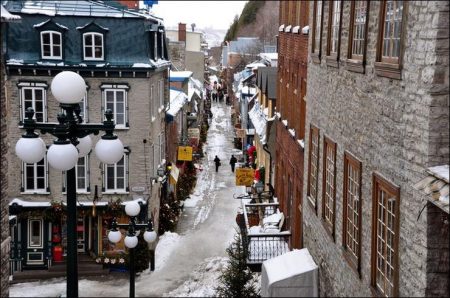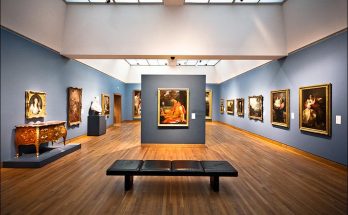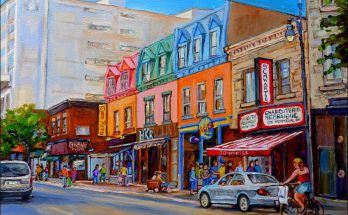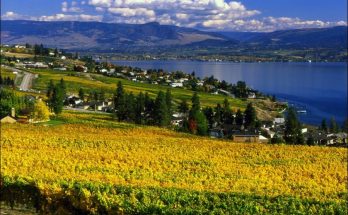Quebec is a province of dense forests in the north, with only isolated fly-in hunting and fishing camps; this gives way to farmlands and smallholdings in the south of Quebec province. Quebec, Canada’s oldest city, is built on a promontry rising steeply on the left bank of the St Lawrence. Narrow streets wind up from the waterfront Lower Town to penetrate the encircling walls of Upper Town.
The pastel colored roofs of the old Lower Town houses, the predominance of French signs, the Boheman Latin Quarter and the quaint horse drawn carriages (caleches). invest Quebec with a unique Old World charm. Prominent among the new warehouses and commercial buildings of Lower Town is the Basilica of Notre Dame des Victories, built 1699. The wall between ‘towns’ has been converted into Dufferin Terrace, a wide promenade 1,400 feet long and magnificently situated overlooking the river. Behind is the graceful bulk of Chateau Frontenac, an old Canadian Pacific Railway hotel.
The Ursuline Convent, one of the oldest girls’ schools on the continent, was founded in 1639 and the Catholic Seminary in 1663. On the flat plateau above the town are the Plains of Abraham where Wolfe defeated Montcalm in 1759, taking Quebec for the British. The battlefield itself is now a park, popular with skiers and skaters in winter.
Parliament Buildings, standing in landscaped grounds, are in 17th century French Renaissance style. There are guided tours of the attractive inner chambers. Also on the Plains are an interesting Provincial Museum and Bois de Coulange, the seat of the Lieutenant Governor of the province of Quebec. The highest part of Quebec is Cape Diamond, crowned by the Citadel, summer residence of Canada’s Governor General.
Visits: 213



